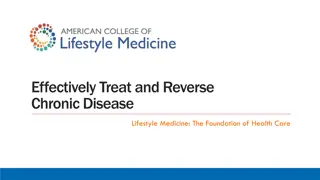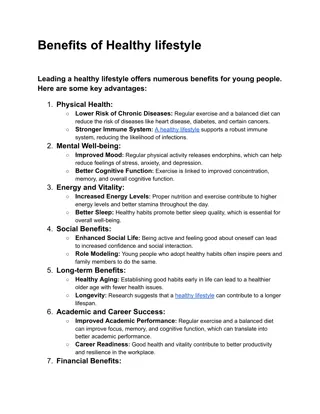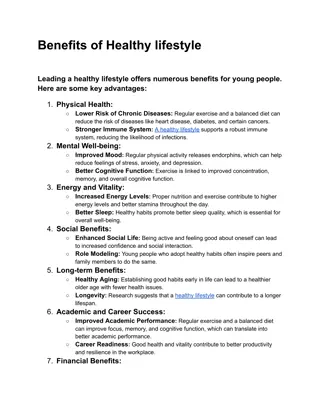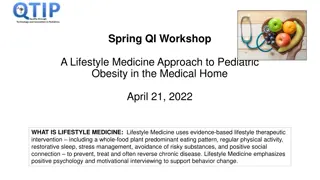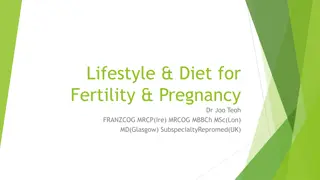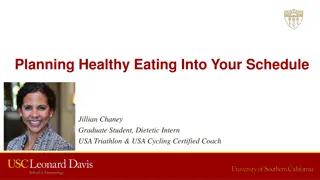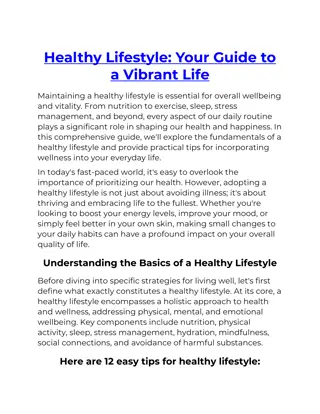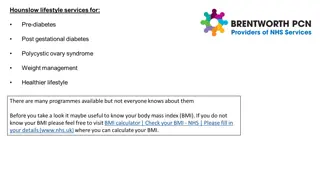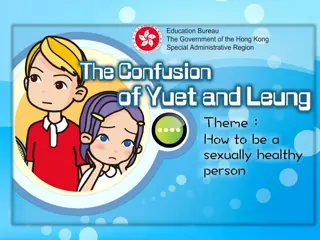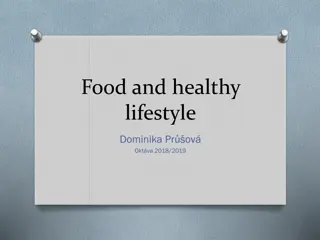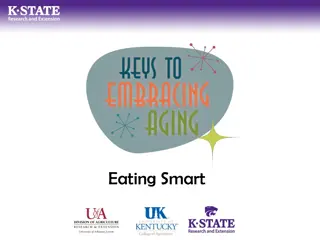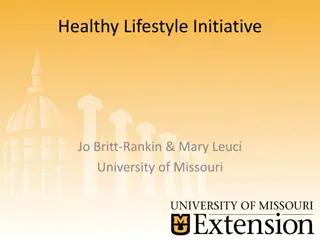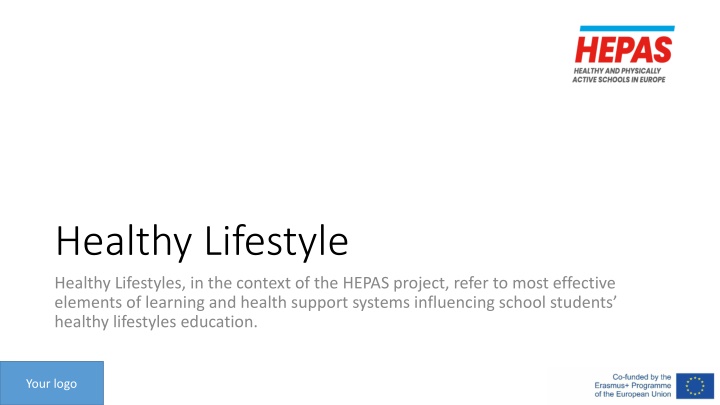
Effective Elements of Healthy Lifestyles in School Context
Explore the six key categories of Healthy Lifestyles in schools, including Family & community engagement, Sex education, Health promotion programs for staff, Healthy eating, Social & emotional education, and Healthy school policies. Learn how these elements contribute to promoting healthy habits and overall well-being among students.
Uploaded on | 0 Views
Download Presentation

Please find below an Image/Link to download the presentation.
The content on the website is provided AS IS for your information and personal use only. It may not be sold, licensed, or shared on other websites without obtaining consent from the author. If you encounter any issues during the download, it is possible that the publisher has removed the file from their server.
You are allowed to download the files provided on this website for personal or commercial use, subject to the condition that they are used lawfully. All files are the property of their respective owners.
The content on the website is provided AS IS for your information and personal use only. It may not be sold, licensed, or shared on other websites without obtaining consent from the author.
E N D
Presentation Transcript
Healthy Lifestyle Healthy Lifestyles, in the context of the HEPAS project, refer to most effective elements of learning and health support systems influencing school students healthy lifestyles education. Your logo
6 Categories of Healthy Lifestyles 6 Categories of Healthy Lifestyles Healthy school policies Healthy Lifestyles, in the context of the HEPAS project, refer to the findings of a consensus study into the most effective elements of learning and health support systems influencing school students healthy lifestyles education. We identify the following 6 categories of Healthy Lifestyles in a school context. Family & community engagement Sex education Healthy Lifestyles Health promotion programmes for staff Healthy eating Social & emotional education
6 Categories of Healthy Lifestyles 6 Categories of Healthy Lifestyles Healthy school policies The Healthy school policies are part of the strategy of the school and must define those elements that are most effective for promoting healthy lifestyles, both in a general plan that will contemplate Health promotion programs for staff, Family & community engagement and Healthy eating, as well as on a more specific level with concrete actions in promoting physically active lifestyles or social, emotional and sexual education. Family & community engagement Family & community engagement is one of the characteristics of the development of Healthy Lifestyles in a school that has defined 6 types of involvement identified as especially relevant: parenting, communicating, volunteering, learning at home, decision making, and collaborating with the community. By observing active behaviours and lifestyles in their families and communities, students can internalise healthy habits, especially if health messages are shared among the triad of school-family-community. Healthy eating Healthy eating is formed by the actions conducted by school staff to engage with both, children and parents, to stimulate healthy eating. Due to the substantial amount of time spent at school, children often consume food and drinks during this time. Healthy eating could be developed by specific programs, school-based interventions combining easier access to fruit and vegetables within classroom lessons and even using engaged students as change agents. Social & emotional education Social and emotional education is the process through which students acquire and apply the knowledge, attitudes, and skills necessary to understand and manage emotions, set and achieve positive goals, feel and show empathy for others, establish and maintain positive relationships, and make responsible decisions. Health promotion programmes for staff Health promotion programmes for staff are essential to the implementation of school-based health promotion as a necessary condition for realising health-related change. The whole-school approach about health education requires training topics as school policies, physical environment, social environment, community links, and health-sector partnerships. As teacher education in Europe rarely includes such content, professional development opportunities are even more crucial in fostering the conditions of healthy lifestyles in schools. Sex education Sex education involves teaching and learning about a variety of topics related to sex, sexuality and relationships, exploring values and beliefs about those topics and gaining the skills that are needed to navigate relationships and manage one s own sexual health.
The evidence The evidence Cognizant of the limitations of any exploratory study, which are likely to be magnified during the unprecedented circumstances in which it took place, we are cautious of overly optimistic or generalised conclusions from available data. But the following two observations represent a pattern of findings in the literature. On a general level, staff professional development, family & community engagement, and healthy eating should be part of healthy school policies developed within school development measures. On a more specific level, promoting physically active lifestyles throughout the school day should be supported by quality PE, active recess, PA in classroom lessons, and active transport.
Recommendations Recommendations What schools can do to encourage their students to adopt healthy lifestyles. The promotion of healthy lifestyles throughout the school day should be embedded within school policies and development plans. Relevant initiatives providing opportunities for healthy lifestyles throughout the school day should be conceptualised in a flexible model of a Healthy and Physically Active School, taking advantage of opportunities throughout the school day, adaptable to individual schools specific contexts. The simultaneous implementation of the components of a healthy school is likely to prove an administrative and professional challenge, so priorities need to be identified, and implementation considered a long-term project. Efforts should be undertaken based on shared agreement among stakeholders school leaders, teachers, parents, community-based decision- makers, and students within school development plans. Opportunities to promote healthy lifestyles should be maximised, so students understand healthy behaviours can be incorporated into all aspects of school life, as well as life beyond school.
Step Step- -by by- -step: What schools can do step: What schools can do Healthy eating Social emotional education 1. Define HL Policies for school 2. Engage families & community 3. Get into action Health programmes for staff Sex education

